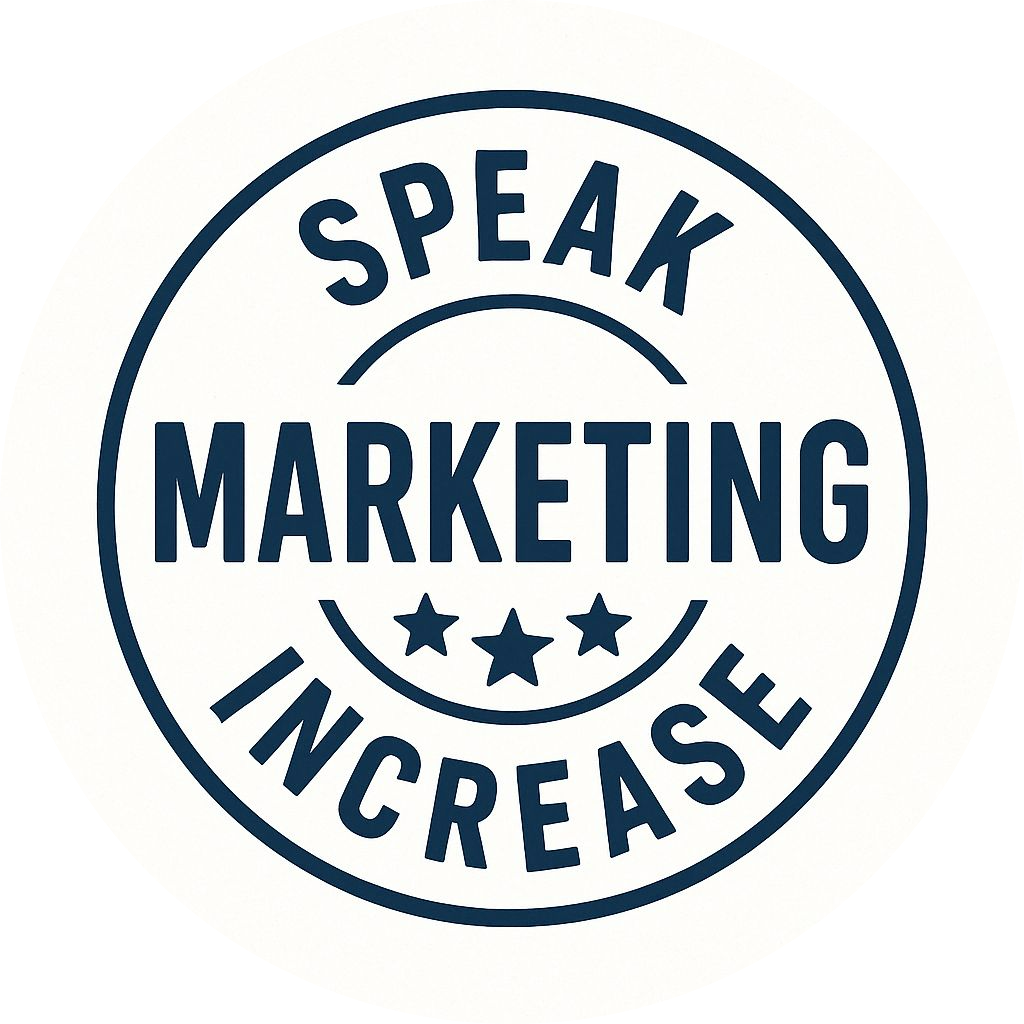Did you know? Marketers who use social media scheduling tools can amplify their campaign efficiency by up to 80% ! If you’re looking to reach wider audiences in less time and streamline your daily media post routine, making the switch from manual posting to automated media scheduling tools is not just smart—it’s essential. Read on and discover which solutions can help you save hours, stay organized, and keep engagement levels high across all your social media platforms.
Discover How Social Media Scheduling Tools Transform Your Productivity

Social media scheduling tools have redefined how brands and creators handle daily posting, campaign management, and audience engagement. By using a robust scheduling tool, you can map out weeks of content in a single afternoon—leaving you free to focus on growing your business, experimenting with new platforms, or simply enjoying more free time. Imagine drafting multiple social media posts, assigning times, and letting automation deliver your content at the perfect moment, even while you sleep or run your business.
- Did you know? Marketers using social media scheduling tools see up to 80% more efficiency in campaign execution, allowing them to reach wider audiences in less time.
Beyond saving time, these tools ensure consistency in your messaging, provide deep analytics for all your media marketing efforts, and reduce the risk of missed deadlines or off-brand content. Whether you're part of a large marketing team or a small business owner juggling multiple hats, scheduling tools unlock a new level of productivity and clarity for your digital marketing workflows.
Unlocking the Benefits: How Social Media Scheduling Tools Help You Save Time
Why Scheduling Tools are Essential for Social Media Success
Posting regularly can be tough—especially if you’re active on several social media platforms. Social media scheduling tools simplify this process, letting you stack and plan content in advance. Instead of daily scrambling or last-minute uploads, you schedule posts for days, weeks, and even months ahead. This proactive approach not only keeps your feed consistent but frees up time for other parts of social media marketing, such as community engagement or analytics review.
With a good media scheduler, you avoid the disruption of real-time posting, which often breaks your focus and hampers creativity. Teams can collaborate on content calendars effortlessly and have every scheduled post reviewed and pre-approved, reducing errors and duplication. The ability to balance engagement across all your social media platforms puts your brand ahead of competitors struggling to maintain daily activity.
The Power of Automation: Streamlining Social Media Post Management

Automation sits at the heart of the best social media scheduling tools. Instead of logging into each social media account and copying individual messages, media scheduling tools connect to your accounts and automate the process of publishing media posts on a set schedule. This ensures your messaging aligns with peak engagement hours and global time zones, maximizing visibility and impact.
Additionally, automation frees up your schedule, transforms how quickly campaigns are launched, and reduces the admin load for small business owners and big teams alike. From recurring promotions to dynamic reporting, these platforms take care of routine media management tasks so creative or strategic work can take priority.
Practical Applications: Managing Multiple Media Posts with Ease
Scheduling software shines when handling multiple media posts across different social media platforms. With integrated dashboards, you visualize all your media posts, campaigns, and pending tasks at a glance. Whether you’re orchestrating a product launch or syncing a brand message across Instagram, Facebook, and Twitter, these tools eliminate confusion and repetitive work.
Small teams benefit by collaborating on content, assigning roles, and tracking media post approval before anything goes live. Even freelancers and solo marketers appreciate being able to set holiday content, schedule weekend promotions, and never miss a beat—making their marketing efforts look polished and professional at all times.
How to Choose the Best Social Media Scheduling Tool
Key Features to Look for in Social Media Scheduling Tools
With dozens of social media scheduling tools available, focusing on a few essential features can narrow your search. Look for platforms that offer easy-to-use calendars, drag-and-drop scheduling, bulk uploading for multiple social media posts, and robust media management. The scheduling tool should allow planning, rescheduling, and viewing posts across platforms in one place—saving time and reducing missed opportunities.
Advanced features might include team collaboration (for assigning drafts or approvals), a unified social inbox, visual content planning, and automated analytics reporting. Don’t overlook security; your preferred media scheduling tool should protect login credentials and provide role-based permissions to safeguard your brand online.
Integration with Social Media Platforms and Media Management

Compatibility is key for any social media scheduling tool. The best tools completely integrate with top social media platforms—Facebook, Instagram, Twitter, LinkedIn, Pinterest, and even Google Business. Seamless integration means you manage all content from a single dashboard, with instant access to media libraries, live feeds, and real-time engagement data.
Professional media management is now accessible to any business, large or small. With drag-and-drop interfaces, integrated media storage, and direct posting capabilities, you’ll save time and eliminate the manual work of uploading and scheduling posts individually. This is particularly crucial for agencies and brands dealing with large volumes of content across different media platforms.
Assessing the Scheduling Functionality: Multi-Channel Planning and Scheduled Posts
Effective scheduling tools should streamline multi-channel campaign planning. Multi-channel posting features let you set up a scheduled post for distribution across every connected network in just one step. This ensures messaging consistency, enables campaign-wide adjustments, and prevents content gaps across your social media platforms.
Look for tools that enable bulk scheduling, recurring content, and easy post editing—even after scheduling. The ability to track which media post goes live, when, and for which platforms is fundamental to professional media scheduling. Scheduled post previews let you check formatting for each platform before launch, helping maintain brand standards effortlessly.
Balancing Cost and Value: Free vs. Paid Social Media Scheduling Tools
From robust free plans to expansive paid subscriptions, social media scheduling tools fit any budget. While free plans are sufficient for solo creators or very small teams, paid options introduce advanced features like analytics, more integrated platforms, and larger team member capabilities. Most reputable providers offer a free trial—giving you a risk-free period to test their features and user experience.
When choosing, make a checklist of your top priorities—number of social media platforms, volume of scheduled posts, need for analytics, or team collaboration. Weigh these against monthly costs or annual discounts. Do not overlook hidden fees—some platforms charge extra for media management or additional team members, so clarify what’s included before committing.
Top Social Media Scheduling Tools Reviewed

Sprout Social: Leading Scheduling Tool for Business Growth
Sprout Social is widely recognized as a powerhouse for social media management and media scheduling. It stands out with intuitive scheduling, a customizable content calendar, and advanced analytics. Brands enjoy seamless content collaboration, easy approval workflows for team members, and robust cross-platform campaign planning. The insights provided by its analytics dashboard help fine-tune social media marketing strategy and drive better decisions for every scheduled post. With a free trial and business-friendly plans, it’s a top choice for growing businesses.
Hootsuite: Flexible Social Media Scheduling Solution
Hootsuite is one of the oldest and most flexible social media scheduling tools on the market. Its strength lies in supporting the widest variety of social media platforms—including YouTube and Pinterest. Hootsuite’s interface lets users bulk schedule posts, manage engagement, and track campaign metrics in real time. Its robust free plan, combined with scalable paid tiers, makes this scheduling tool perfect for startups, small businesses, and enterprise teams alike. Team collaboration, approval queues, and detailed reporting are all built in.
Buffer: Simplified Media Scheduling for Teams

Buffer stands out for its simple layout, transparent pricing, and quick learning curve for new users. Buffer enables streamlined media scheduling across multiple social media platforms—including Twitter, LinkedIn, Instagram, and Facebook—from one dashboard. Bulk upload, content calendar views, and in-depth post analytics are available even on its free plan. Buffer is ideal for teams requiring direct collaboration on social media posts, making it a trusted management tool for brands wanting to maximize impact with minimal complexity.
Later: Intuitive Visual Social Media Scheduling Tool
If visual content is your strength, Later is the specialist. Its dynamic drag-and-drop media scheduler makes it easy to queue up Instagram, Pinterest, Twitter, and Facebook posts visually. Later’s media library and hashtag suggestions empower small businesses and influencers to create engaging content fast. It also offers advanced analytics, a content calendar, and branded link tools—perfect for precise campaign management.
CoSchedule: Advanced Social Media and Media Marketing Management
CoSchedule is the management tool of choice for larger teams needing extensive automation and coordination. Its headline analyzer and robust content calendar are industry favorites. CoSchedule brings together blog, social media, and project management in one interface, making it best for brands with complex marketing needs and multi-channel strategies. Powerful integrations with CRM and email services extend its value for end-to-end media marketing.
| Tool | Platforms Supported | Key Features | Free Plan | Free Trial | Best For |
|---|---|---|---|---|---|
| Sprout Social | Facebook, Twitter, Instagram, LinkedIn, Pinterest | Advanced Analytics, Team Workflow, CRM Features | No | Yes (30 days) | Medium–Large Businesses |
| Hootsuite | All major platforms | Bulk Scheduling, Multi-User Support, App Integrations | Yes | Yes (30 days) | All Sizes |
| Buffer | Facebook, Twitter, Instagram, LinkedIn, Pinterest | Team Collaboration, Queue Features, Reports | Yes | Yes (14 days) | Small–Medium Teams |
| Later | Instagram, Pinterest, Twitter, Facebook | Visual Calendar, Hashtag Tools, Linkin.bio | Yes | Yes (14 days) | Visual Brands & Creators |
| CoSchedule | All major platforms | Headline Analyzer, Full Calendar, Integrations | No | Yes (14 days) | Advanced & Agencies |
"Automation through social media scheduling tools is not just a time-saver—it's a game changer for scaling marketing efforts."
Step-by-Step Guide: Getting Started with Social Media Scheduling Tools
Setting Up Your Social Media Accounts with Your Chosen Scheduling Tool
After selecting your ideal social media scheduling tool, the first step is account integration. Most platforms offer a guided setup, prompting you to securely connect your social media accounts—such as Facebook, Instagram, Twitter, and LinkedIn—by authorizing API access. This process syncs your profiles to the tool, pulling in profile images, bios, scheduled post history, and messaging details seamlessly. It only takes a few minutes per account and ensures a smooth experience as you begin scheduling posts across platforms from a single dashboard.
Some tools even recommend optimal posting times based on past engagement data, while providing the means to consolidate messages, manage team members, and review scheduled posts in one location. Security remains a top priority, so always use authentic login credentials and enable two-factor authentication when possible to protect your brand identity.
Creating Social Media Posts in Advance for Multiple Channels

With all social media accounts connected, it’s time to create your social media posts. Modern tools offer rich post editors where you upload images, videos, and copy, tag locations, and even insert branded hashtags or calls to action. Batch-writing posts for each media platform reduces creative burnout and maximizes efficiency—especially when you tailor content for different audiences and formats.
Bulk scheduling is especially valuable for campaign launches, holiday promotions, or evergreen posts. Set dates and times for each scheduled post, and watch your campaigns run like clockwork, even outside office hours. If you make a mistake (or change your mind), most platforms allow you to edit media posts before publication or quickly reassign them to a new date.
Planning a Content Calendar for Effective Media Scheduling
A content calendar is a visual guide for organizing, scheduling, and tracking all your social media posts. By mapping posts weeks or months ahead, you align your messaging with marketing goals, product releases, or trending topics. Most social media scheduling tools have built-in content calendars featuring color-coded views for each platform, approval status, and publishing schedules—allowing easy oversight for individuals and teams alike.
Consistent planning ensures that your social media scheduling supports brand strategy, maintains voice, and avoids gaps in activity. Review your calendar at least weekly to audit future posts, re-prioritize content, and adapt to audience trends or breaking news. Effective content calendars become collaborative roadmaps for your entire social media management team.
Tips for Optimizing Social Media Post Engagement
Maximize the reach and impact of every social media post with a few best practices. Post at optimal times when your audience is most active—most scheduling tools provide analytics to help determine these windows. Use compelling visuals, strong headlines, and tailored hashtags unique to each platform. Vary content formats, such as video, stories, and carousels, to keep your audience engaged and interested.
Encourage interaction by including questions, polls, or calls to action, and always review post analytics to refine your future approach. Tagging relevant accounts and integrating trending topics also boost visibility. Stay responsive—monitor comments and messages regularly to keep engagement meaningful and timely.
- Checklist: Must-Do Steps When Launching Your First Scheduled Post
- Connect all relevant social media accounts securely.
- Draft and preview your media posts for each platform.
- Set dates, times, and review scheduled post calendar.
- Enable notifications for successful publication and engagement feedback.
- Analyze initial results, adjust content if needed, and go live!
Measuring Performance: Analytics and Strategy Refinement for Social Media Scheduling
Using Analytics Offered by Social Media Scheduling Tools

Advanced social media scheduling tools offer in-depth analytics dashboards that track every scheduled post and its performance. Metrics such as reach, engagement, clicks, and conversions allow you to identify what resonates best with your audience. These insights are invaluable for improving your social media management strategy—enabling data-driven decisions on content types, optimal posting times, and campaign themes.
By monitoring these analytics, businesses can benchmark growth, spot engagement drops, and quickly adjust course. Regularly reviewing this data streamlines campaign reporting, elevates collaboration among team members, and enables continuous improvement for all your media marketing efforts.
The Role of Performance Metrics in Media Marketing and Social Media Management
Performance metrics are essential for successful media marketing. Key metrics like impressions, click-through rates, shares, and comments help marketers evaluate content effectiveness. Social media management platforms combine these numbers in real time, allowing marketers to spot opportunities or challenges before they snowball.
Detailed breakdowns by platform or campaign make it easy to understand what works best for your unique audience. Integrating this feedback into your scheduled post strategy ensures you’re always one step ahead—providing the content your audience craves, when and how they prefer to see it.
Continuous Improvement: Refining Your Scheduling Strategy Over Time
No social media strategy is ever done—a successful approach evolves constantly. Use post analytics to review campaign performance every month. Identify top-performing content themes, posting times, and formats. Test new media scheduling strategies, review competitor activity, and don’t be afraid to experiment.
This data-led approach lets you update your content calendar, scheduling process, and even the selection of social media scheduling tools for maximum impact. Regular refinement is the hallmark of a professional, future-proof social media marketing operation.
| Metric | What It Measures | Why It Matters |
|---|---|---|
| Engagement Rate | Likes, comments, shares per post | Reveals how actively your audience interacts |
| Impressions | Times post was displayed | Helps determine content reach |
| Click-Through Rate (CTR) | Clicks per post or link | Shows how compelling your content is |
| Audience Growth | Increase in followers over time | Measures brand expansion efforts |
| Publishing Frequency | Posts published vs. scheduled | Ensures consistency against goals |
Best Practices: Advanced Social Media Scheduling Tips
Maximizing the Impact of Your Scheduled Social Media Posts
To make your scheduled posts stand out, batch-create content by campaign or theme and schedule during peak engagement times identified by analytics. Vary your content mix—use video, images, polls, or stories—to capture a broader audience and maintain interest. Scheduled posts should be tracked for engagement, enabling you to adjust and optimize your content strategy in real time.
Automated A/B testing of headlines, visuals, and CTAs lets you identify what works best for your audience, leading to sustained social media growth and stronger brand loyalty.
Maintaining Brand Consistency with Social Media Scheduling Tools
Social media scheduling tools make it easier than ever to ensure your brand’s voice and aesthetics remain consistent across all media platforms. Use templates, approved media libraries, and centralized content calendars for every scheduled post. This is especially important for large teams, where many members contribute content—ensuring that every social media post aligns with brand voice and guidelines.
Build scheduled post approval workflows into your tool of choice, reinforcing quality assurance while allowing for quick campaign pivots if needed. Regular audits of published content foster a culture of ongoing improvement and consistency.
Leveraging Media Scheduling Tools to Manage Crisis Communications

During fast-moving news cycles or brand emergencies, social media scheduling and media management tools enable immediate crisis planning. Teams can pause scheduled posts, publish real-time updates, and coordinate messaging across departments for strategic response. The ability to quickly reschedule posts or insert emergency statements minimizes the risk of insensitive or out-of-place content going live.
Emergency media marketing demands agility—having a robust social media management tool in your toolkit is a safeguard for brand reputation and trust. Actionable alert systems and dedicated communication channels help your team react fast while maintaining professionalism.
Collaborating as a Team: Social Media Management Workflows
Media scheduling tools streamline collaboration by assigning posts to team members, tracking approval stages, and consolidating comments or edits in one dashboard. Whether you’re a marketing agency or a brand with multiple contributors, assigning roles ensures accountability and clarity. Team collaboration improves efficiency and guarantees all content is reviewed and optimized before publication.
- Tips List: Avoiding Common Mistakes with Social Media Scheduling
- Review all posts for accuracy and timeliness before scheduling.
- Monitor scheduled posts for duplicate content or outdated information.
- Engage with your audience—don’t “set and forget” automation.
- Update your strategy regularly with analytics insights.
- Have a “pause” workflow for scheduled posts in times of crisis.
How Small Businesses Can Leverage Social Media Scheduling Tools

Scaling Social Media Marketing with Smart Scheduling Strategies
Small businesses benefit tremendously from social media scheduling tools by stretching limited resources further. With a single dashboard managing posts across multiple platforms, owners can keep up with larger competitors while focusing on daily operations. Batch scheduling frees up time for customer service, in-store experiences, or new product development.
Experiment with media posts for local events, special promotions, or community engagement—all scheduled in advance to maximize reach and impact. Scheduling tools democratize social media marketing, making professional campaigns accessible to even the leanest teams.
Budget-Friendly Scheduling Tool Options for Startups and Small Teams
Most top-rated media schedulers offer free plans that cover basic scheduling, single-user accounts, and limited analytics. Tools like Buffer, Later, and Hootsuite provide accessible options for startups and small businesses looking to test the waters before investing in premium tiers. Free trials are common, allowing hands-on experience with expanded features such as advanced reporting, more platforms, or additional team members—so you pay only for what you need as you grow.
Case Study: How Social Media Scheduling Tools Drove Efficiency for a Local Business
Consider a local café that pivoted to digital marketing during lockdowns: by switching to a social media scheduling tool, their small team planned two weeks of promotional media posts, scheduled menu updates, and promoted daily specials in advance across Facebook and Instagram. The result—higher consistent engagement, more pre-orders via Google Business links, and less time spent on last-minute posting. Streamlined media management made real-world business growth a reality.
Understanding Social Media Scheduling Tool Integrations
Connecting Media Scheduling Tools to CRM, Analytics, and Content Platforms

Modern media scheduling tools don’t just schedule posts. They connect with CRM systems, analytics software, content creation platforms, and email marketing tools. This integration centralizes data for a full-funnel view—letting businesses personalize scheduled posts, track customer journeys, and automate lead nurturing. Choose a scheduling tool that supports API integrations and offers plug-ins for your favorite platforms—this maximizes efficiency and ROI.
Seamless Cross-Platform Campaigns through Social Media Scheduling
Integrated scheduling platforms make it easier to run campaigns across various social media platforms and media channels without duplicating effort. Schedule a single post or campaign and automatically tailor it for each required platform—adjusting formats, images, and tagging as appropriate. This approach ensures your messaging remains consistent and scalable, even as campaign complexity grows.
Solving Common Integration Challenges in Social Media Management
While integration amplifies value, it requires careful planning—especially with API changes, platform limitations, or data privacy regulations. If you encounter hurdles, look for troubleshooting resources, robust customer support, or community forums offered by your scheduling tool provider. Invest in platforms with proven tracks records for ongoing updates and strong, transparent data security measures.
The Future of Social Media Scheduling and Media Scheduling Tools
Emerging Trends: AI and Automation in Social Media Scheduling

Artificial intelligence is set to transform the future of social media scheduling tools. Next-generation AI tools are already suggesting optimal posting times, auto-generating hashtags based on trending topics, and adjusting schedules in real time based on audience activity. Automation is shifting from static routines to dynamic, learning-driven strategies that adapt automatically for maximum reach and engagement.
Predicted Impact on Social Media Marketing and Content Creation
AI-driven scheduling will level the playing field—giving small brands access to the kind of data-driven insights and automated workflows previously reserved for enterprise-level teams. Scheduled post customization, predictive content success analysis, and streamlined cross-posting will become table stakes. Content creators can focus more on quality storytelling, audience engagement, and real-time interaction while letting algorithms optimize posting strategy in the background.
Sustainability and Adaptability of Social Media Scheduling Tools
Sustainability in digital marketing is gaining steam. The most valuable social media scheduling tools continually update features to stay relevant, embrace new social media platforms, and regularly improve security protocols. The ability to adapt to emerging trends, new regulations, and rising customer expectations ensures these tools remain an essential pillar of every brand’s digital toolkit.
"Being early adopters of advanced social media scheduling tools will be crucial as the digital landscape continues to evolve."
People Also Ask: What is the best scheduling tool for social media?
Expert Recommendations for Leading Social Media Scheduling Tools
According to industry pros, Sprout Social, Buffer, and Hootsuite are among the best scheduling tools for social media in 2024. The ideal choice depends on your team size, budget, preferred social media platforms, and the required features like analytics or collaboration. Many experts recommend starting with free plans or free trials to assess which platform aligns perfectly with your workflow and growth needs before investing in a paid plan.
People Also Ask: What is the 50/30/20 rule for social media?
Explaining the 50/30/20 Rule for Social Media Scheduling and Campaign Balance
The 50/30/20 rule guides content balance for social media marketing: 50% value-driven posts (tips, news, inspiration), 30% shared content (industry news, partners), and 20% promotional posts about your products or services. When used with media scheduling tools, this rule helps brands maintain audience interest and avoid being overly sales-heavy—boosting overall engagement and trust on each social media platform.
People Also Ask: Are there any free social media scheduling tools?
Top Free Social Media Scheduling Tool Alternatives Explored
Yes! Buffer, Hootsuite, and Later all offer generous free plans that cover core media post scheduling for up to 2–3 platforms. These free tools allow individuals and small businesses to experiment with automation before upgrading. Advanced features (like analytics or additional team members) usually require paid plans, but you can start scheduling posts, saving time, and managing multiple channels at zero cost upfront.
People Also Ask: What is the 5 5 5 social media strategy?
Decoding the 5 5 5 Social Media Strategy for Effective Scheduling
The 5 5 5 social media strategy recommends taking five minutes, five times a day, on five days each week to engage on your preferred social media platforms. This micro-engagement method keeps your brand consistently active and responsive. Combined with advance scheduling for baseline posts, it helps marketers and small teams balance automation with genuine human interaction—building lasting community ties and generating organic reach.
Frequently Asked Questions about Social Media Scheduling Tools
- Can I schedule posts on all my social channels with one tool? Most leading scheduling tools offer integration with multiple social media platforms, letting you plan, review, and manage posts in one spot for ultimate convenience.
- Is automation risky? Will my posts look spammy? Automation is safe if you maintain variety in your content and regularly review scheduled posts. Editing each scheduled post for platform-specific nuances prevents a spammy or robotic feel.
- How secure are these management tools? Reputable tools use secure connections, API authentication, and role permissions to keep your accounts safe. Always activate two-factor authentication and review user access regularly.
- Can team members collaborate on scheduled posts? Yes—most advanced scheduling tools offer team features, enabling member roles, content approval workflows, and in-app feedback channels.
- How do I handle last-minute changes or crisis updates? Built-in pause and reschedule functions let you halt or edit scheduled posts as needed. Having clear workflow protocols for emergencies keeps your social media messaging appropriate and timely.
Master Social Media Scheduling Tools and Watch Your Efficiency Soar
- Key steps for boosting your social media strategy with scheduling tools
- Start by choosing a scheduling tool designed for your platform mix.
- Connect all your social media accounts in one dashboard.
- Plan campaigns and fill your content calendar weeks in advance.
- Collaborate with your team for approvals and edits.
- Monitor analytics and update your strategy regularly.
"Start automating your posts with the right social media scheduling tools and reclaim valuable hours each week."
Ready to Save Time? Start Using Social Media Scheduling Tools for Success Today
Select a top-rated social media scheduling tool, sign up for a free trial, and watch your productivity—and engagement—soar. Don’t let manual posting eat up your workweek. Act now—explore your options and start automating your social media success today!
To enhance your understanding of social media scheduling tools, consider exploring the following resources:
-
“Best content calendar software of 2025” : This comprehensive guide from TechRadar details the top content calendar software tools of 2025, helping users manage and schedule their social media content effectively. It highlights platforms like Canva Pro, Hootsuite, Sprout Social, ContentStudio, and Sendible, evaluating them based on features, ease of use, integrations, pricing, and target user groups. ( techradar.com )
-
“Social Media Scheduling Tools - The Best in 2024” : This article from Pallyy provides an overview of the best social media scheduling tools in 2024, focusing on features, pricing, and suitability for different users. It offers insights into various platforms, including Pallyy itself, and discusses their capabilities in scheduling, analytics, and management for social media managers, agencies, businesses, and influencers. ( pallyy.com )
If you’re serious about optimizing your social media strategy, these resources will provide valuable insights into selecting and utilizing the right scheduling tools for your needs.
 Add Row
Add Row  Add
Add 




Write A Comment